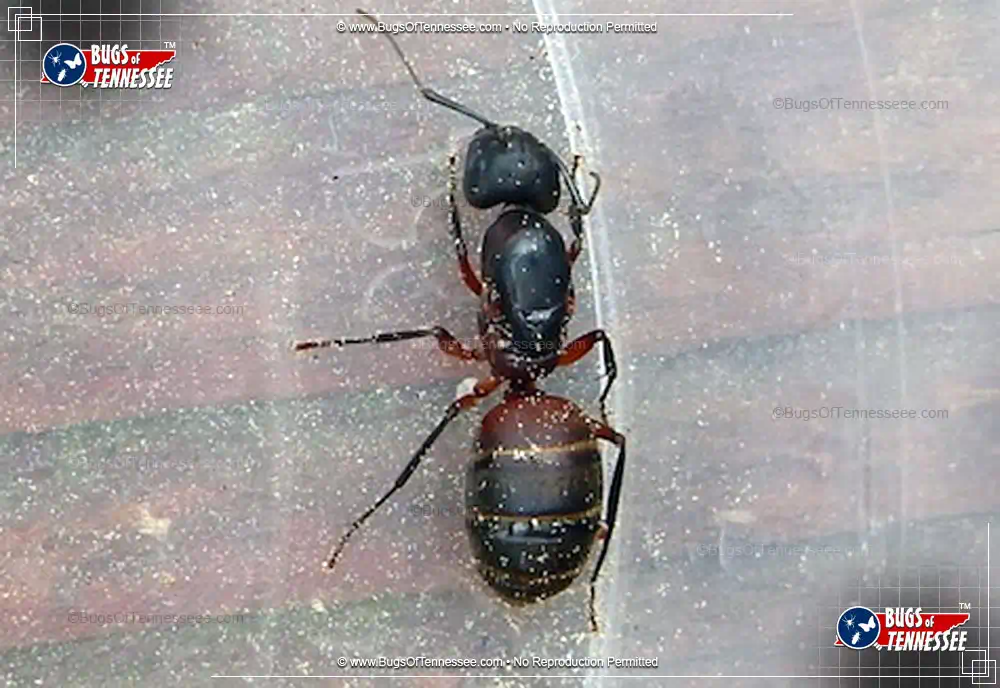Insect Order (Hymenoptera)
HYMENOPTERA
Order Hymenoptera encompasses Ants, Bees, and Wasps. About 18,000 types reside in North Amerca (excluding Mexico). Like other insects, they have chewing mouth parts for breaking down food sources. Ants can deliver bites through their mandibles while Bees and Wasps sting to repel threats and subdue prey. The order typically operates during the warm summer months across Tennessee. Bees are an utterly important part of the state's ecosystem, eating pollen and nectar to help raise their young - Bee by-products are essential in many human products and their pollinating action serves many other purposes. While Bees and Wasps live in carefully constructed nests, the social Ant survives in colony made up of networked tunnels. The furry Bumble Bee is not aggressive by nature though disturbing an in-ground nest of Yellow Jacket wasps will be a mistake made only once!
Taxonomy
Other Names: "Red Carpenter Ant"
The Taxonomic Breakdown is the scientific way to categorize a partocular insect species from its largest group (Animalia) to its smallest (variable). The Genus and Species categorizations taken together make up the species' scientific name shown above, in this case Camponotus chromaiodes.
Kingdom: Animalia
Phylum: Arthropoda
Class: Insecta
Order: Hymenoptera
Family: Formicidae
Genus: Camponotus
Species: chromaiodes
Characteristics
Abdomen: Has a noticeably large / oversized abdomen.
Antenna: Antenna are noticeably apparent on this insect.
Indoors: Can be found indoors; inside dwellings.
Outdoors: Typically found across the great outdoors.
Pantry Pest: Targets indoor human and pet food sources.
Pest: Generally considered a pest to humans.
Six-Legged: Six legs are common to this insect.
Description
The Ferruginous Carpenter Ant is also known by these other names:
Red Carpenter Ant
The Ferruginous Carpenter Ant has been identified by site users by the following descriptors:
six-legged outdoors indoors pest pantry kitchen antenna abdomen maroon red black beige tan
Sighting Guide
The general likelihood of encountering this insect based on a given month of the year in the state of Tennessee. Generally, the best sighting months are June through August with peak occurring in July.
Size
Below is a representation of the 'smallest-small' and 'largest-large' sizes commonly associated with the Ferruginous Carpenter Ant. Due to monitor differences, sizes may not be exact on your particular screen. Conversions to millimeters are provided for convenience.
Lowest-Low:
0.24 inches
(6 mm)
Highest-High:
0.55 inches
(14 mm)
Identifying Colors
Below you will find the colors most commonly associated with the Ferruginous Carpenter Ant. Both Primary and Secondary colors are represented in the showcase. Due to monitor differences, colors may not be exact representations.
Tennessee County Reach
The Ferruginous Carpenter Ant can be found in the following Tennessee counties:
Anderson; Bedford; Benton; Bledsoe; Blount; Bradley; Campbell; Cannon; Carroll; Carter; Cheatham; Chester; Claiborne; Clay; Cocke; Coffee; Crockett; Cumberland; Davidson; De Kalb; Decatur; Dickson; Dyer; Fayette; Fentress; Franklin; Gibson; Giles; Grainger; Greene; Grundy; Hamblen; Hamilton; Hancock; Hardeman; Hardin; Hawkins; Haywood; Henderson; Henry; Hickman; Houston; Humphreys; Jackson; Jefferson; Johnson; Knox; Lake; Lauderdale; Lawrence; Lewis; Lincoln; Loudon; Macon; Madison; Marion; Marshall; Maury; McMinn; McNairy; Meigs; Monroe; Montgomery; Moore; Morgan; Obion; Overton; Perry; Pickett; Polk; Putnam; Rhea; Roane; Robertson; Rutherford; Scott; Sequatchie; Sevier; Shelby; Smith; Stewart; Sullivan; Sumner; Tipton; Trousdale; Unicoi; Union; Van Buren; Warren; Washington; Wayne; Weakley; White; Williamson; Wilson
Ferruginous Carpenter Ant Picture (1)
1 of 1

Close up detail view of an adult female Ferruginous Carpenter Ant.; Credit: Steven K. of California, MD.
This image is original to
www.InsectIdentification.org; Used with Permission.
